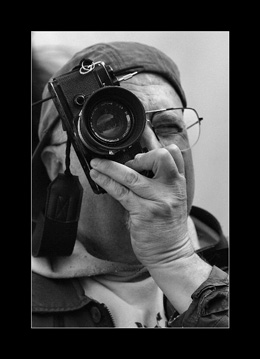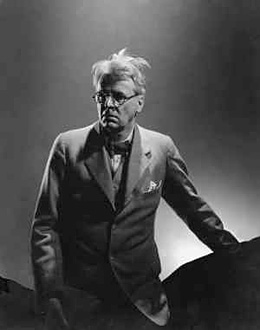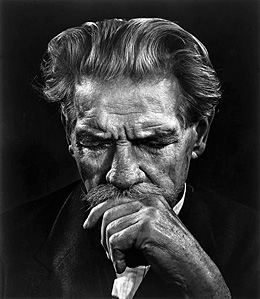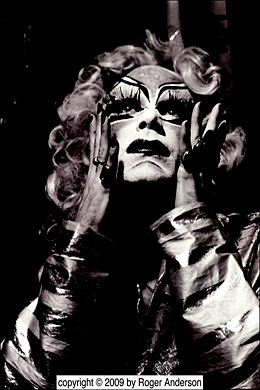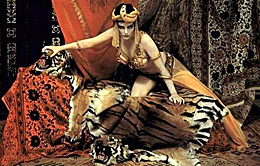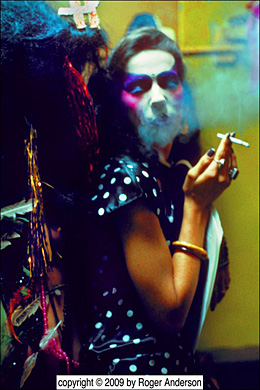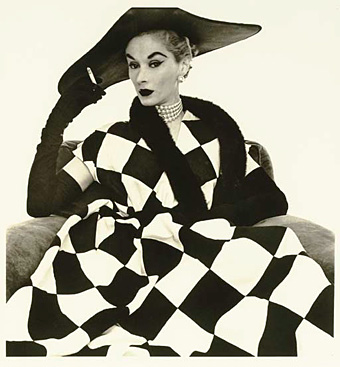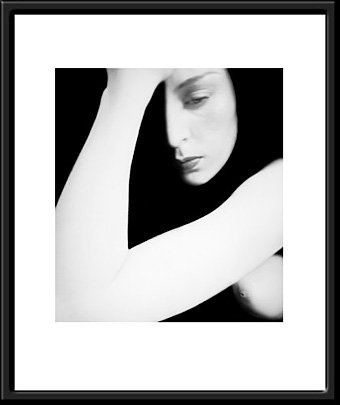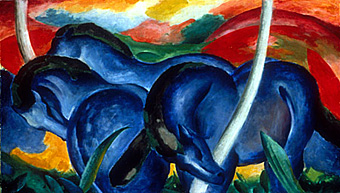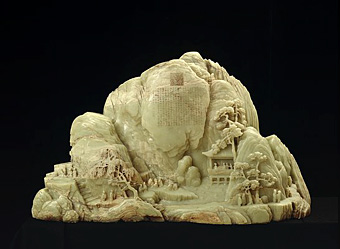|
|
|
|
|
|
|
|
|
|
||||||||
|
|
||||||||||||||||
A memoir by Roger Arvid AndersonMarch 2, 2009Okay shutterbug... time to loosen up, because I have a question I need to ask myself. It’s the same question I like to ask of other artists and collectors. What is the first piece of artwork or perhaps that first aesthetic experience that got your juices going? Many artists like myself are not necessarily one medium artist’s, so the answer to that question can be complicated. As a poet I’d name Yeats and a reading of his masterpiece, ‘Sailing to Byzantium’. As a sculptor I’d point, as I did as a little boy, to the luminous Jade Mountain now at the Minneapolis Institute of Arts. As a painter I’d surely stop, as I did as a teenager, before the magical Blue Horses of Franz Marc in the collection of the Walker Art Center. As a photographer, well that’s another matter... Let me think? ...Answer memory! ...When and where and just how did I catch the shutterbug? Catching bugs is an apt metaphor for my life as well as my temperament, which can be as curious as the day is long. Suburban sprawl had yet to swallow up the Village of Little Canada in Minnesota where I grew up in the 1950s. I was lucky to really have an open field to roam, a big lake to swim and a large forest to explore. As a kid I was a skilled collector of insects. With my butterfly net and pith helmet I was a character out of a Peanuts cartoon. I was as devoted to the pursuit of the legendary tiger swallowtail as my father was devoted to bringing down a majestic ring-necked pheasant. But the day came when my father took me aside and said he had put away his guns. He told me then and there he didn’t want to kill any more birds or animals. He’d always been something of a photographer, but the patience he had once put into stalking a partridge was now focused on any hummingbird that came within range of his giant telescopic lens. In the winter he’d whistle to the cardinals, and lured to the birdfeeder, they’d receive the same ‘star’ treatment as the bluebirds, woodpeckers, and rose-breasted grosbeaks. I was also a star, that is, my father’s star pupil. So my very first photograph was definitely ‘an event’ and subsequently trotted out ad infinitum during our seasonal slide shows for neighbors and guests. It was an art lesson of a kind. We were visiting Wyoming when my father gave me his camera and asked me to hike to a certain precarious lookout where I was to capture a particularly dramatic view of Yellowstone Falls. It was an epic challenge for a little boy and what a triumph to reach that far lookout and snap the picture. Unfortunately I was not aware at the time that I had my finger over the lens. If you want to be an artist you have to learn humility and humiliation: humility in the face of the great masters and humiliation at the hands of learning the invariably hard lessons of mastering technique. My father was my first master. He was a methodical photographer and was acutely aware of the value of composition. It was never a matter of just point and shoot. Cameras were more than playful gadgetry. They allowed you to see in radical ways because moments were frozen forever. He loved to speak of higher aims such as documenting the variety of wing movements that could be caught shooting a hummingbird drawing in nectar from a flower. As might be expected, much like my father and guns, the day came when I no longer wanted to pin dead insects in a glass case. I certainly owe him my nose for tracking down grasshoppers in a field or agates in a gravel pit, but he also taught me how to stalk a great shot. Most artists find you learn best by watching and then by doing. I had been watching my father take pictures for a long time before he handed me my first camera and roll of film. But when he did, he put his hand on my shoulder and chuckled, "Now you don't need to be told to keep your finger off the lens, but there's one thing you might not know." He wasn't kidding when he told me: "Don't ever try and take a picture of the sun!" I have to admit that was sound advice, but I have to admit I was suddenly a rebel with a cause. I was at that age when I felt challenged to establish my own identity, independent of my father, and that meant taking a picture that was all my own. So I marched over to the field behind our house and picked a giant dandelion that had gone to seed. With one hand I lifted that fluffy orb into the sky until I had it poised over the sun. Then with my other hand I aimed the camera and snapped my first photo: a picture of the sun. It was both an act of defiance and imagination. Nevertheless it didn’t take my father long to add that photo to his tray of prized slides. In retrospect I have to admit I’ve caught a fair number of other bugs as well. One was a peritonitis inflammation at twelve from a burst appendix. I nearly died, but during the long recuperation, to cheer me up, my neighbors gave me a subscription to the National Geographic Magazine. Those pages were my introduction to the great nature and travel photographers of the day. Africa was also home to one of my childhood heroes. Albert Schweitzer served mankind as a musician and physician. What he called a reverence for life still animates my social consciousness. A steely black and white portrait by Yousuf Karsh of a reflective Schweitzer was on prominent display in our home. Not surprisingly my first sculpture was a bust of Schweitzer inspired by that very photograph. The clay was modeled in my seventh grade art class and amazingly still survives as does my admiration for Schweitzer and portrait photography. One art can feed another. Painting certainly led me to the intimate poses and portraits of Georgia O'Keeffe by her husband Alfred Stieglitz, while poetry and my taste for Yeats led me to Edward Steichen whose flair for dramatic lighting set the standard even for Hollywood as he chronicled the celebrities of his day for Vanity Fair. And to be thoroughly fair to vanity I’m obliged to admit my mother had been a fashion model and was celebrated for her beauty. The latest Vogue and Harper’s Bazaar were always topping some great stack around the house. That, of course, was my introduction to the glamour photography of Irving Penn. My mother bore more than a passing resemblance to the elongated elegance and refinement of Penn’s Swedish wife and model Lisa Fonssagrives. Marilyn Monroe, however, was something else. In the hands of Richard Avedon she was not only voluptuous but oddly transcendent. In a 1958 feature for Life magazine, which I distinctly remember because I saved it, he posed her in the provocative costumes of sex symbols of the past. I must have learned something from that notorious spread because the day came when I had my chance to pose the sex symbols of my day. Thanks to both Avedon and Penn I was prepared. Midnight at the Palace with The Cockettes... It proved to be psychedelic San Francisco at its best and most ridiculous. Brazen as they were I told them: I don’t want to shoot this like some gaga tourist. No, let’s keep our cool. I want you to pose like I’m here on assignment and this is a cover story for Vogue. They got into it and so did I. That was 1972. That photo essay is really my first. I call the sequence, Stage Struck. It owes a lot to serendipity, nevertheless, many more have followed, some just as spontaneous and others more methodical in conception. Titles include: The Age of Bronze, Shadow Boxing, Street Smart, Italian American, The Square Circled, Urban Zen, Window-Shopping, Yellow Brick Road and Folsom. From September of 2001 to November of 2002 I spent over a year photographing Star-Spangled, a walking tour of America after 9/11, from Cape Cod to the Santa Monica Pier. But for the moment let’s get back to that original question, the one I habitually ask of other artists and collectors. In this case what is the first photograph that got your juices going? In fact, let’s sharpen the question. When did you start thinking of photographs as something more than just an occasional snapshot but as an art form? I know exactly the moment it happened to me. I was at Cambridge pursuing my second degree when I opened a Sunday supplement to one of the London papers. The featured article with photos was all about the artistry of Bill Brandt. I never looked at photos the same way again. A pastime became an adventure. |
|
|||||||||||||||
|
|
|
||||||||||||||
|
||||||||||||||||
| All photographs posted with this essay are for educational use only. | ||||||||||||||||
